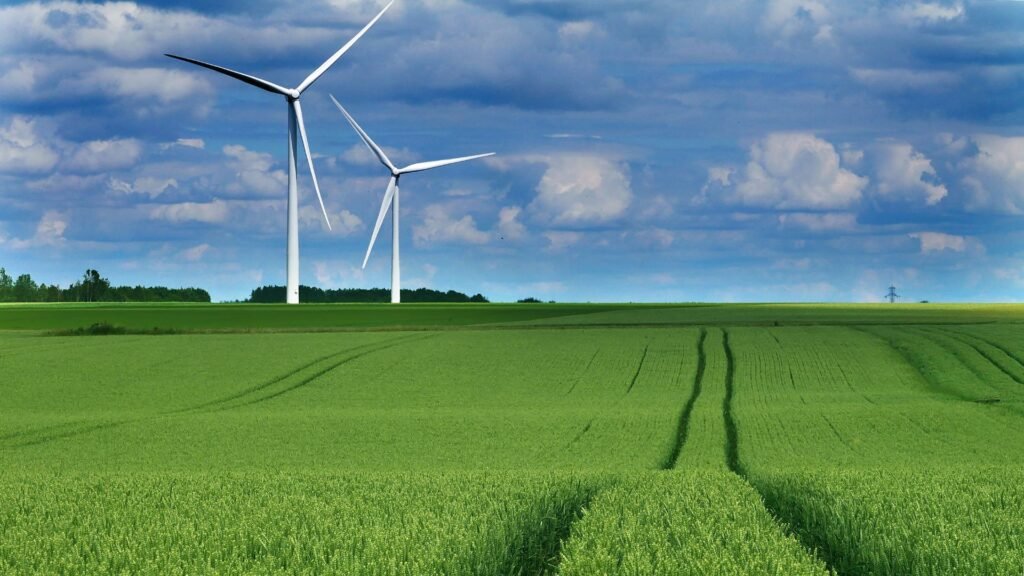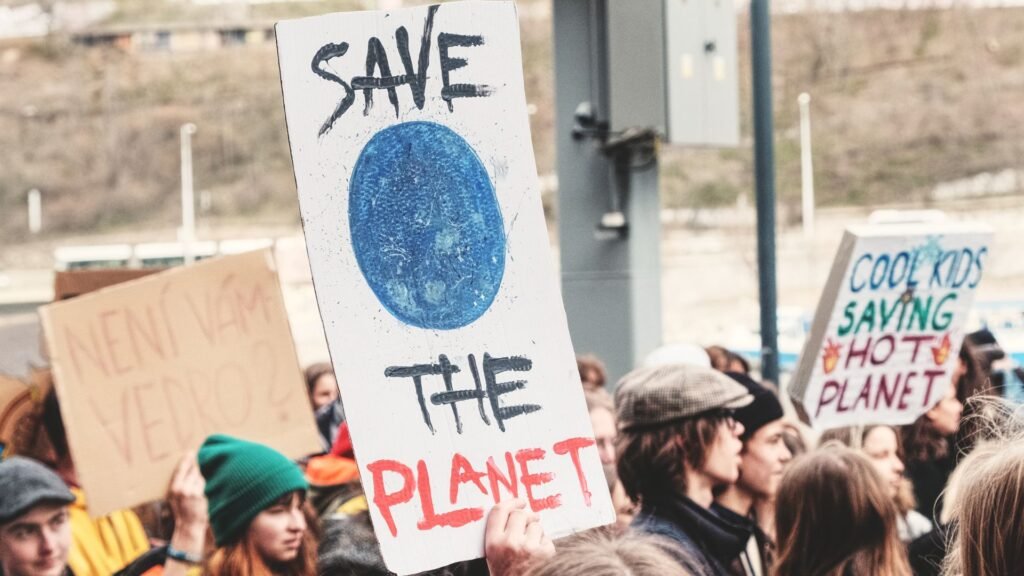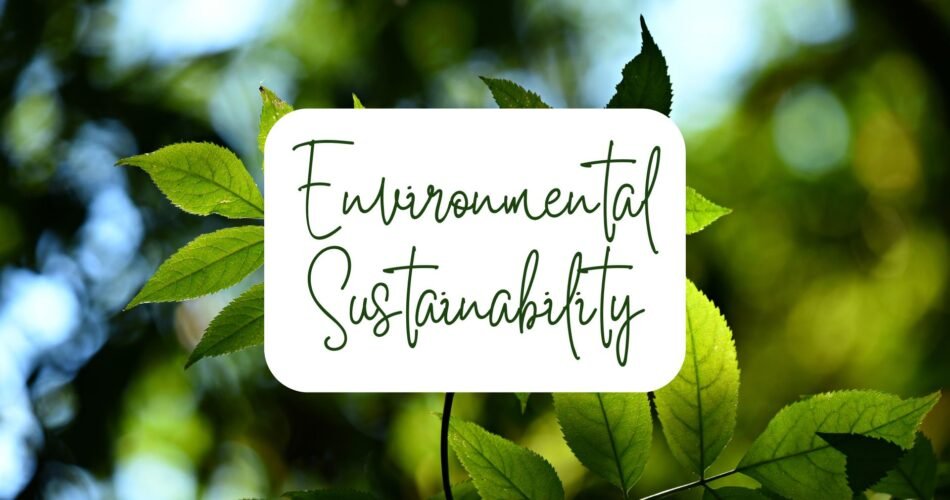This blog contains information about Environmental Sustainability. In the start, it describes what is Environmental Sustainability. Then it mentions some of the Examples of Environmental Sustainability. It also elaborates the Main Features of Environmental Sustainability. In the end, it explains the Strategies of Environmental Sustainability. This blog contains Examples, Features and Strategies of Environmental Sustainability in detailed form.
What is Environmental Sustainability?
Environmental Sustainability is a pillar of Sustainable Development that asks us to encourage and live in ways that does not put stress on Natural Resources. It helps in maintaining Ecological Balance.
As we all know Sustainability is the concept of meeting the needs of present generation without compromising the needs of future generation. The concept of sustainability is very beneficial for the present time. As we are struggling with Food Insecurity, Resources Exploitation, Water Scarcity and also many other such problems.
The term sustainability has four boundaries or pillars, these boundaries include Environmental, Economic, Social and Cultural sustainability. We will discuss the Environmental Sustainability concept in this blog with detail.
In simple words, the Environmental Sustainability guides us to live with Green habits and sustainable strategies in order to protect and restore our environmental resources. So, that the resources in our use, would be available for our next generations in the same way. This also guides us to adapt and prevent Climate Change and Global Warming.
It includes Mitigation measure, Restoration practices and Green Living in order to create Environmental sustainability. This study and term provides us awareness about how we can protect, restore and sustain environmental changes at some extent to conserve them for future generations.
We will learn about how we can utilize the concepts of Environmental sustainability to Conserve and Preserve Natural Resources and so as to protect them for restoring the environmental resources. You can get detailed information about Sustainability and Its Goals in our blog.
Examples of Environmental Sustainability:
Following are some common Examples of Environmental Sustainability:
. Use of Renewable Energy:
An example of application of Environmental Sustainability is the use of Renewable energy. We can use them instead of fossil fuel usage for industrial and commercial purposes. This will be eco-friendly and sustainable to the environment which will provide same results in productivity i.e. Solar Energy.
. Waste Management:
If there will be proper waste management with considering 4R strategy in the management systems, there will be reduction in wastes and automatically reduced environmental impacts of the wastes. This will help to reduce harmful emissions from landfills.
. Sustainable Agriculture and Forestry:
Agricultural practices are contributing a lot in land pollution, water pollution and different drawbacks. Sustainable practices in the field of Agriculture and Forestry will be useful for us to protect our ecosystem and the environment from Deforestation, Desertification and Soil Erosion.
These are few examples of Environmental Sustainability. This blog contains Examples, Features and Strategies of Environmental Sustainability.

Main Features of Environmental Sustainability:
Following are the main Features of Environmental Sustainability:
1. Ecosystem Services:
Ecosystem services are the direct and indirect contributions ecosystem provides for human and its well-being so these services are necessary for the survival or the human beings on Earth. The ecosystem services includes provision of water, food, natural resources of daily use, regulating the climate and also other such services directly from the ecosystem naturally. These services helps in reducing Anxiety and Stress by providing cultural aspects so this is an important concern of Environmental Sustainability there is a need to protect, mitigate and restore these ecosystem services.
2. Green Engineering and Green Chemistry:
Another important feature of Environmental Sustainability. As green engineering is the source of techniques and designs that are environmentally friendly and sustainable to use. While Green Chemistry is the branch of chemistry that takes out and make sustainable chemicals and environmentally friendly ways to be used in daily life purposes. These both field helps us to find sustainable solutions, designs and chemicals that are harmless to the environment.
3. Air Quality:
Environmental Sustainability works for the monitoring and protecting the atmosphere from rising air pollution as the result of human activities. This also deals with the industrial emissions control, monitoring of the air quality by comparing it with Air Quality Standards and addressing every problem related to Air Pollution and Air Pollutants. Air Quality is restored and monitored for making it sustainable for long-term also suitable and reliable for the upcoming generations.
4. Water Quality:
As there is a speedy rise in population, the Earth is facing a lot of Water Crisis. These crisis include Water Pollution, Water Scarcity, and such other problems that are increasing day by day due to over-exploitation of water resources. The term Water Quality deals with the type and quality of water that is available for human use. Most of the water have pollution, plastic wastes, solid wastes, chemical wastes etc. The purpose of Environmental Sustainability is to keep the water safe for human health and environment at the same time.
5. Stressors:
Environmental Sustainability also takes account of the stressors that are the human-induced stresses on the ecosystem and environment. These are the result of human activities that leads to the destruction of environment and also it takes away from the Sustainability. The stresses on the ecosystem include pesticides, fertilizers, contamination of water sources, Air pollution, Major Air pollutants and household wastes. It is the responsibility of Environmental Sustainability mechanism to take care of these stresses and also to eliminate or reduce their effects on the Environment.
6. Resource Integrity:
Resource Integrity is the concept that defines itself as “Undisturbed state of Natural Conditions”. This concept guides us about the ideal condition in which we can live without any restriction on resources and use them freely. Environmental Sustainability provides us ways and strategies to live in stress free state and use the resources as much as you need without having any fear of their abandonment. Earth is facing many complex situation in the field of Natural Resources, but we can reduce the impacts of Resource Scarcity by applying Sustainable and Eco-friendly techniques to avoid excessive damage.
These are some of the important factors that takes account in Environmental Sustainability.
List of Environmental Sustainability Strategies:
Following are some strategies of Environmental Sustainability:
i. Use of Eco-friendly Methods:
The main concern of Environmental Sustainability is the use of Eco-friendly methods in industrial and commercial processes. These methods derives from Renewable energy sources. These methods have negligible in GHGs emissions and also their resources restore on their own with passing time. In other cases, it works for the modification of processes to reduce their damage to the environment.
ii. Resource Conservation:
It guides us about the ways and techniques by which we can conserve the resources to make them sustainable for a long time. Man is practicing over-exploitation of the resources for years so if this condition remains the same, it will make the resources scarce and vanished from the Earth. Conservation explains us to use resources in a way that they can be saved for future generation.
iii. Pollution Prevention:
Environmental strategies help us in the reduction and prevention of pollution. It also involves 4R strategy and other such concepts that help us to avoid excessive pollution. It also shows us alternatives such as Bio-degradable plastics and other eco-friendly products that can easily be degraded by the environment naturally. Prevention of pollution play a great role in Restoration of the Environment.
iv. Zero Discharge:
Zero discharge refers to the elimination of discharge of pollutants from point sources. These chemical discharges from the industries and also factories adds into the river water, canal water or streams that is used for Irrigation later. They pollute every part of water resource and soil that comes in their way and this kills aquatic and so as freshwater animals and plants. This strategy makes sure that there is no pollutant discharge from sources.
v. Reduce Carbon Footprint:
Carbon Footprint is the emissions or carbon contribution by human activities. The Carbon footprint includes the emissions by the manufacturing of the products, Industrial emissions, Household energy utilization, generation of electricity and Deforestation. The goal of this strategy is to reduce Carbon emissions in overall human activities and switch to Sustainable ways to need your needs.
vi. Green Living:
Green living is the life style that a person can adopt to avoid damage of the environment. This helps us to live an Eco-friendly life. This living style contains Green Habits that guides us to use ecofriendly products, reduce our emissions, applying 4R strategy and also other such activities to restore the nature. With the help of Green Living we can conserve our environment for a long time for next generations.
vii. Sustainable Food:
Food supply is the most complex environmental issue in this rising population. Environmental Sustainability guides us to grow food sustainably with sustainable agricultural practices and by using organic things to increase fertility rates. It inhibit the use of Intensive Farming and also other Unsustainable farming and agricultural practices. This helps to avoid Desertification.
These are some of the Strategies of Environmental Sustainability. This blog contains Examples, Features and Strategies of Environmental Sustainability.

To learn about more topics, click the links below:


Comments